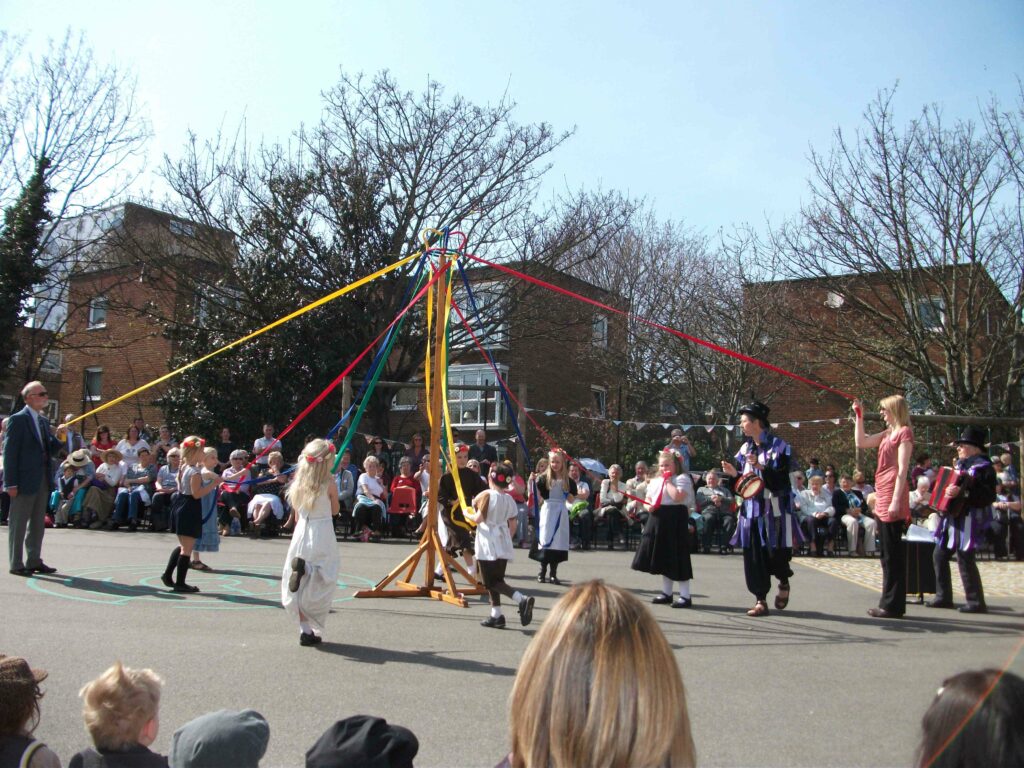I’m Judith Proctor, and I got into maypole dancing quite by accident. I was visiting the school where my morris team practiced (back then, we were still paying by cheque) and they mentioned that they’d found an old maypole in a cupboard.
Did I know anything about maypole dancing?
I said ‘Yes’ by reflex, and then went and booked myself onto a one day course to learn how to teach maypole…
Not long after that, I was teaching an entire class of infants how to maypole dance. It was interesting, but a bit tricky, as the pole had twelve ribbons and there were 20+ children…
After several weeks, of only teaching half the class at a go (and having the other half dance round a chair trying to imagine it was a maypole), I bit the bullet and bought my own maypole with 24 ribbons.
The picture above is of the school’s maypole – as you can see, it needed adults to hold two ribbons for some dances, as the top rotated freely and could not be locked in position…. (That’s me, Judith, with the tatter jacket and drum)

At that time, I thought maypole was a purely English tradition. Little did I know how wrong I was…
At that time, I was a member of the Quayside Cloggies morris team (in addition to Anonymous Morris who wear the tatter jackets Pam and I are wearing in the school photo). Cloggies, who were based in Poole (Dorset, England) were invited to dance in Cherborg. What we didn’t know was that a German dance group had also been invited. I cannot, alas, remember their name, but in addition to whatever German folk dances they performed, they also brought a portable ‘maypole’, to perform the Bandertanz waltz.
It was my first introduction to non-English ribbon dances, and I was fascinated.
Not long after that, my cousin Patsy mentioned in her Christmas letter that she had joined a Spanish maypole team.
I was hooked!
I started researching, and started finding ribbon dances in all kinds of unexpected places.
Needless to say, I also teach some of these dances when I get the opportunity.